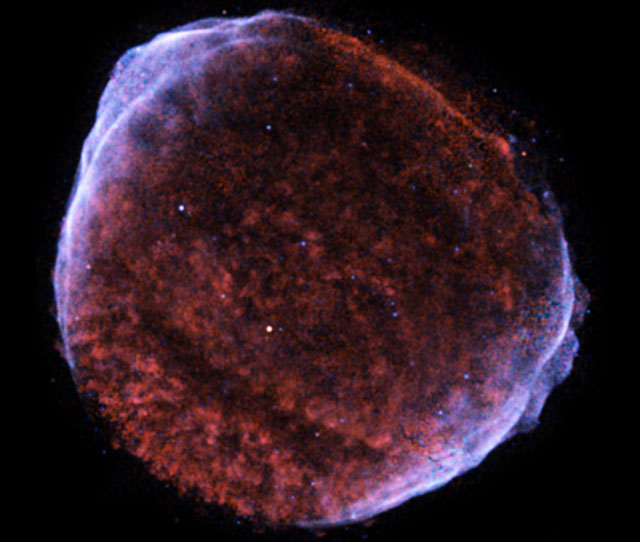Explanation: This huge puff ball was once a star. One thousand years ago, in the year 1006, a new star was recorded in the sky that today we know was really an existing star exploding. The resulting expanding gas from the supernova is still visible with telescopes today, continues to expand, and now spans over 70 light years. SN 1006 glows in every type of light. The above image of SN 1006 was captured by the orbiting Chandra Observatory in X-ray light. Even today, not everything about the SN 1006 is understood, for example why particle shocks that produce the bright blue filaments are only visible at some locations. SN 1006 is thought to have once been a white dwarf that exploded when gas being dumped onto it by its binary star companion caused it to go over the Chandrasekhar limit. Foreground stars are visible that have nothing to do with the supernova.
1999 2000 2001 2002 2003 2004 2005 2006 2007 2008 2009 2010 2011 2012 2013 2014 2015 2016 2017 2018 2019 2020 2021 2022 2023 2024 2025 |
Январь Февраль Март Апрель Май Июнь Июль Август Сентябрь Октябрь Ноябрь Декабрь |
NASA Web Site Statements, Warnings, and Disclaimers
NASA Official: Jay Norris. Specific rights apply.
A service of: LHEA at NASA / GSFC
& Michigan Tech. U.
|
Публикации с ключевыми словами:
supernova remnant - SN 1006 - остаток Сверхновой
Публикации со словами: supernova remnant - SN 1006 - остаток Сверхновой | |
См. также:
Все публикации на ту же тему >> | |
